Fire safety is crucial in any workplace, to keep employees, visitors, and any other occupants safe.
In the UK, The Health and Safety Regulations (1996) requires all businesses to have the right fire safety signs in all workplaces.
However, having the right fire safety signs on display isn’t just a regulation that businesses need to follow; it’s also a major way to prevent injuries and save lives if a fire emergency does happen.
In this blog, we’ll look at why fire safety signs matter, how they can help during a fire, and provide a visual guide to the most important fire safety signs that every business needs to know!
Understanding fire safety signs and symbols
Fire safety signs are really important, as they provide clear information, warnings, and directions to follow in the event of a fire.
They’re designed to help occupants spot potential fire dangers, understand what to do during a fire emergency, and most importantly, find their way to safety.
Putting the right fire safety symbols in place is more than just a legal requirement for fire safety – it can actually save lives.
Businesses in the UK need to comply with regulations by having the right kind of fire safety signs and symbols on display within their premises. If these regulations aren’t followed, it can result in hefty fines and serious legal ramifications.
More importantly, failing to place fire safety signage can cause confusion and make things more dangerous for occupants during a real fire.
It’s also important to understand what different fire safety signs and symbols mean, so read on to learn more.
The 5 types of fire safety signs
So, what are the types of fire safety signs that businesses need to know? There are 5 five main categories of fire signage that you should be familiar with:
1. Prohibition signs
Prohibition signs are safety signs that tell you what you can’t do in a certain area.
They’re usually red and white, featuring clear visual symbols which depict the prohibited activity or behaviour.
An example of a prohibition sign is a red and white sign showing a cigarette with a line through it, to indicate that you’re in a ‘no smoking’ area.
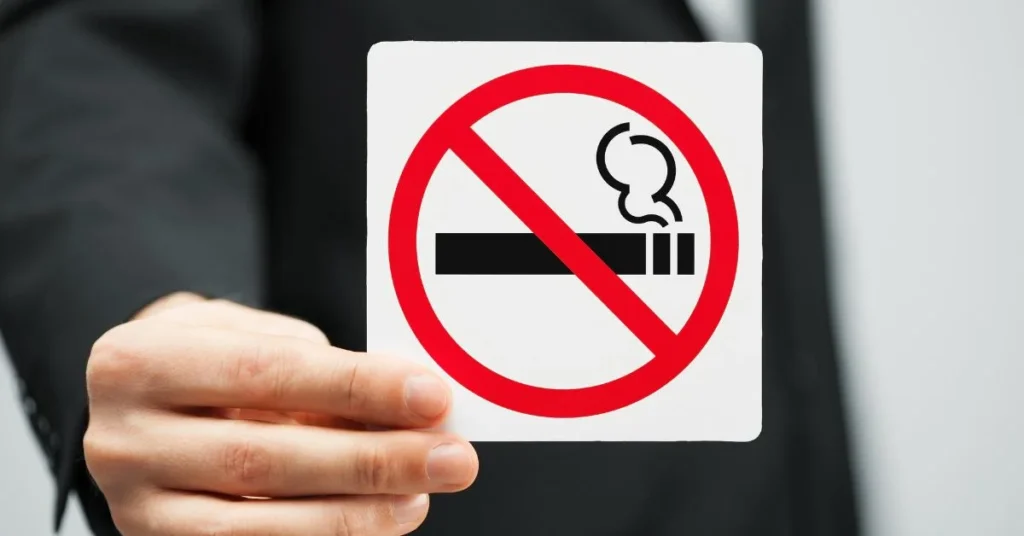
2. Warning signs
Warning signs are usually yellow and black, showing possible fire hazards or dangers. They warn occupants about flammable materials, which helps prevent accidental fires from being started.
They can also warn people about dangerous substances or physical hazards on escape routes.
Fire warning signs often look like yellow triangles, with a black border and black symbol or text depicting the hazard.
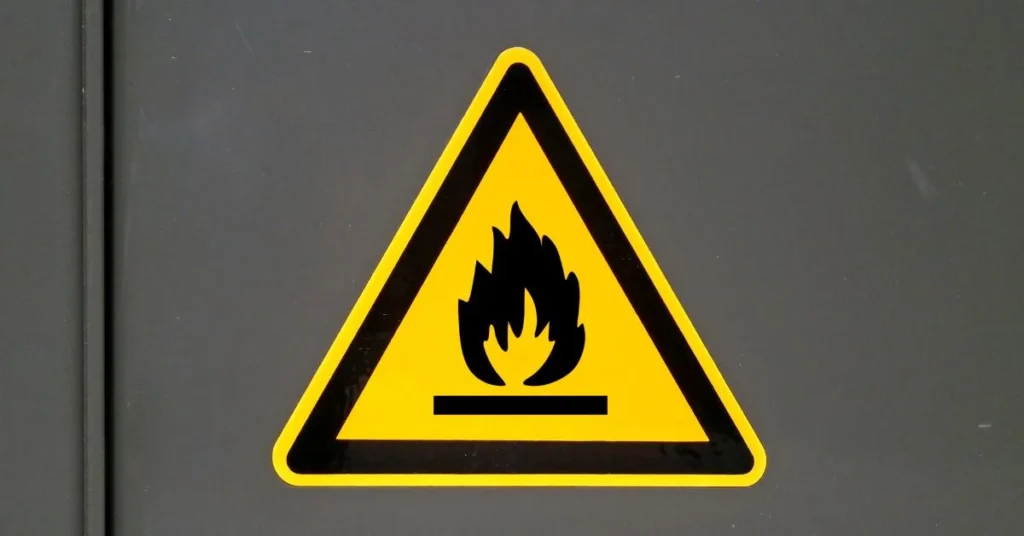
3. Mandatory signs
Mandatory signs are used to tell occupants what they need to do in order to stay safe and comply with fire safety legislation.
They’re usually blue circles, with white text or symbols showing safety instructions which occupants must follow.
An example of a mandatory sign is a blue circular sign with the words “Fire door, keep shut” written on it.
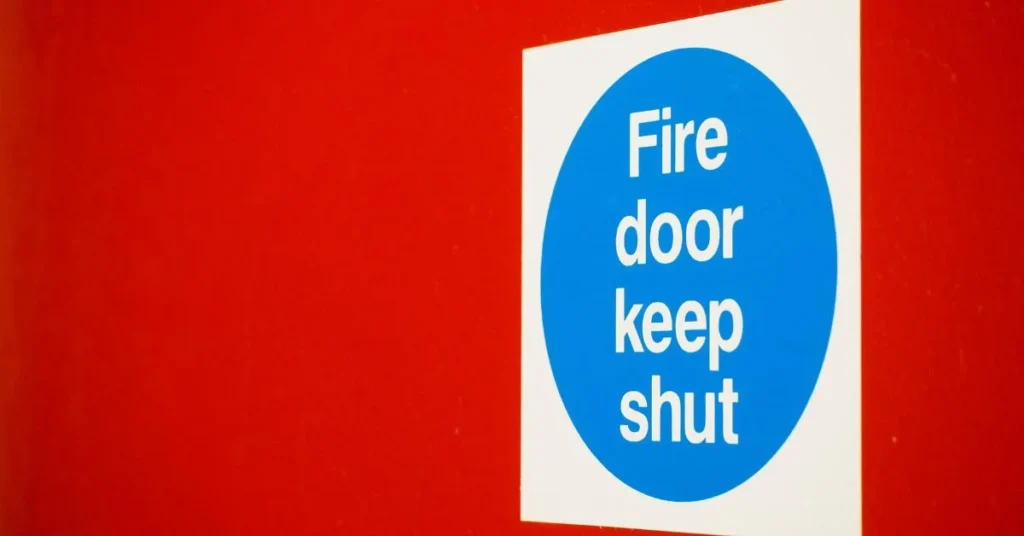
4. Emergency exit/escape route signs
Emergency exit or escape route signs are crucial during a fire emergency.
These signs are usually green and white, with information to guide occupants to the nearest emergency exit or fire escape route. They help everyone find their way out quickly and safely if a fire does occur in a building.
An example of an emergency exit or escape route sign would be a green rectangle with white text or symbols showing people where the nearest exit is.
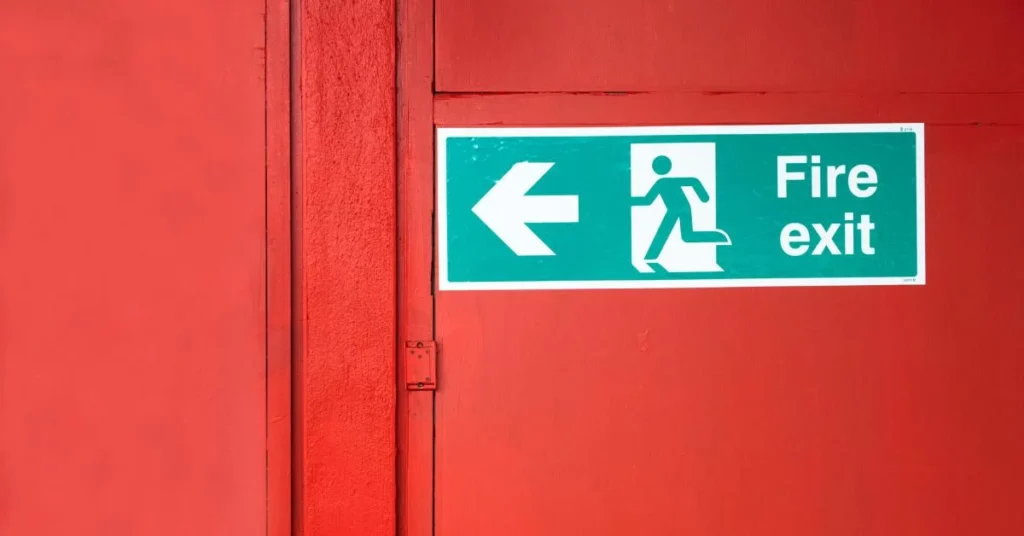
5. Fire equipment signs
Fire equipment signs are designed to show people where to find firefighting and safety equipment like extinguishers, hoses, fire blankets, or alarms.
These signs are usually red and white, making it very easy for occupants to find the tools they need to fight or control a fire.
An example of a fire equipment sign is a red square or rectangle, with white text or symbols which direct people towards the tools they need.
E.g.: these signs commonly have things like “Fire extinguisher” or “Manual call point” (with relevant fire action notice) written on them.
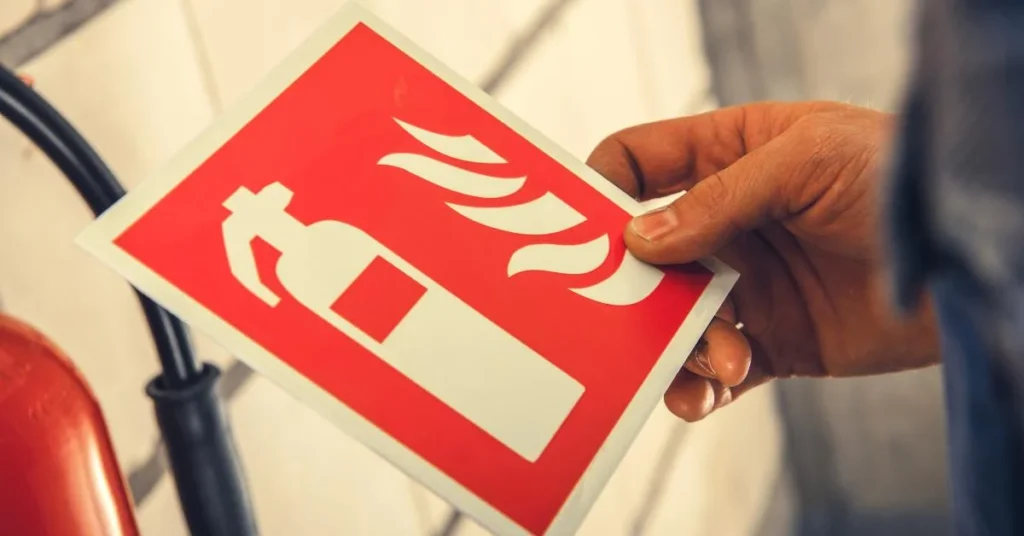
Fire safety symbols
Knowing and understanding common fire safety symbols is really important for all occupants on a business premises.
These symbols are recognised across the world and give quick visual hints that can help to save time during an emergency.
Some of the most common fire safety symbols are:
Fire extinguisher symbol: shows where fire extinguishers are located in a building.
Running man symbol: directs people to emergency exits.
Manual call point symbol: usually a red box, where you can break the glass to set off the fire alarm. It usually comes with a fire action notice that tells you what to do if you find a fire and points out the location of a safe assembly point.
Understanding these symbols helps your team act fast in a crisis, which can save lives and reduce damage in the event of a fire emergency.
Protect your business with a fire risk assessment
Having the right fire safety signs is super important for keeping your business occupants safe. It’s not just about following rules; it’s about saving lives and avoiding serious injury or damage.
Businesses need to make sure their fire signs follow UK laws and that everyone can easily see and understand them.
To guarantee your fire safety signs are effective and meet fire safety legislation standards, it’s really important to get a professional fire risk assessment.
Get a free quote from FireRiskAssessments.com today to make sure your business is well-protected against hazards and has the right fire safety signs and symbols.
